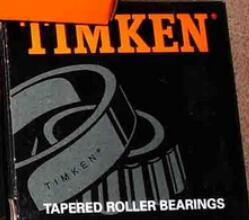TIMKEN bearing is a kind of precision mechanical support element. Users of TIMKEN bearing deeply hope that the TIMKEN bearing installed on the main machine will not be damaged and maintain its dynamic performance during the predetermined period of use. However, the objective facts are sometimes not satisfactory and unexpected. TIMKEN bearing failure accident will cause heavy losses to users. A large number of failure analysis studies of rolling TIMKEN bearings show that the short life or premature loss of precision of TIMKEN bearings is caused by material defects or improper manufacturing, but to a considerable extent, it is caused by not strictly complying with the requirements of TIMKEN bearings. , Maintenance, or improper selection of the TIMKEN bearing or the actual load exceeding the rated load of the TIMKEN bearing itself, which causes the abnormal damage of the TIMKEN bearing. For example, the fatigue peeling of the TIMKEN bearing parts is largely due to the mixing of lubricating oil Caused by impurities. It can be seen that in order to achieve a longer life and accuracy retention period for rolling bearings, in addition to requiring TIMKEN bearing manufacturers to improve product quality, TIMKEN bearing users must also use TIMKEN bearings with scientific methods and procedures. Otherwise, even the best TIMKEN bearings will be used. Will die under harsh and casual use conditions.
The installation method of TIMKEN bearing varies with the structure, fit and condition of TIMKEN bearing. Generally, since most of the shaft rotates, the inner ring needs an interference fit. Cylindrical bore bearings are usually pressed in with a press or hot-fitting method. In the case of a tapered hole, install it directly on the tapered shaft or install it with a sleeve. When installing to the shell, there is usually a lot of over-fitting, and the outer ring has interference. It is usually pressed in with a press, or there is also a shrink-fitting method for installation after cooling. When dry ice is used as the coolant, the moisture in the air will condense on the surface of the TIMKEN bearing when the shrink fit is installed. Therefore, appropriate anti-rust measures are required.






